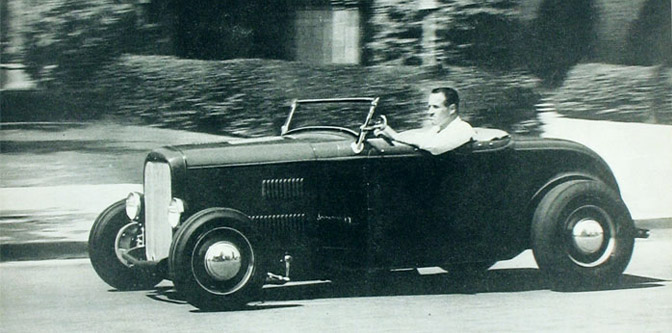Icon: The Bob McGee ’32 Roadster

The term ‘icon’ gets thrown around more than it should. Iconic objects should by definition be timeless, sought after and historically significant. I was watching a few videos on line last week and caught the Jay Leno’s Garage episode interviewing Bruce Meyer with the McGee Roadster, and if any hot rod in history deserves the icon term, this car should be at the top of the list for many reasons. Lets start with all the milestone firsts: The lowest of the highboys, Gear Grinder McGee paid very close attention to stance building his ’32, when it was very uncommon to do so. In Bob’s words, “My desire was to have a body centerline low and parallel with the horizon. To do this I installed a dropped axle and reversed the eyes on the front spring. The rear portion of the frame was Z’d, and the eyes on the rear spring were reversed to bring the rear down, too. I also filled all the unnecessary holes, boxed the frame horns, and installed a peaked spreader bar. The external door hinges seemed out of place and worked against the sleek, clean look I wanted, so I installed concealed ’40 Studebaker Champ hinges [the first to do so] and filled the cowl vent. I also eliminated the lower deck panel and attached a fabricated panel to the decklid to fill the gap [made by Whitey Clayton], built a three-piece aluminum hood, filled the radiator shell, and added ’46 Pontiac taillights [more hot rod firsts].”
Shown at the inaugural SCTA Hot Rod show at the Los Angeles Amory in 1948, McGee’s roadster was the first to receive the National Safety Council Green Cross, and the first street-driven hot rod on the cover of Hot Rod magazine (Oct. 1948). It was later sold to Dick Hirschberg, who traded it to L.A. Roadsters co-founder Dick Scritchfield a short time later. Under Scritchfield’s ownership the car saw many more firsts and the icon status was grown well into the 60s and early 70s…


